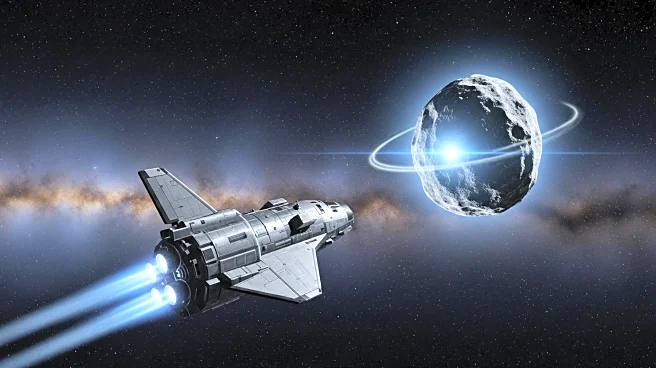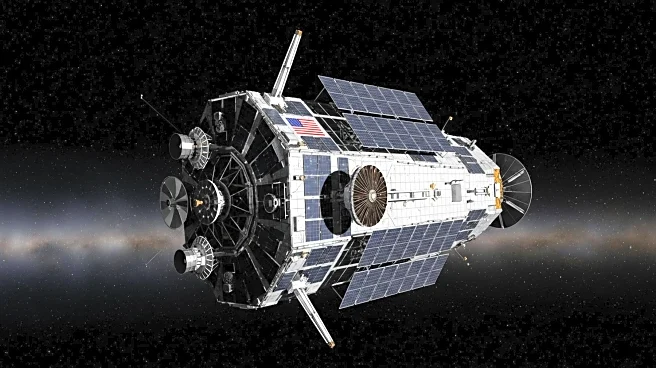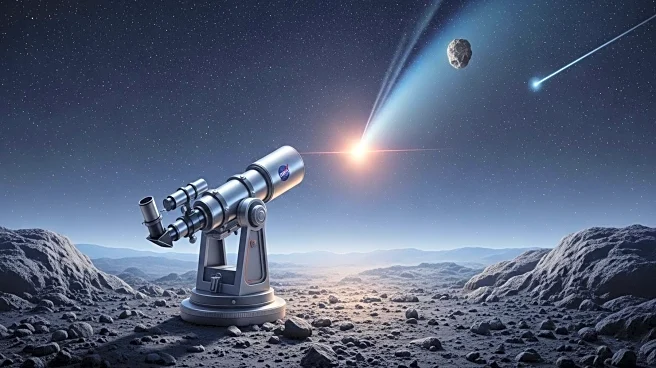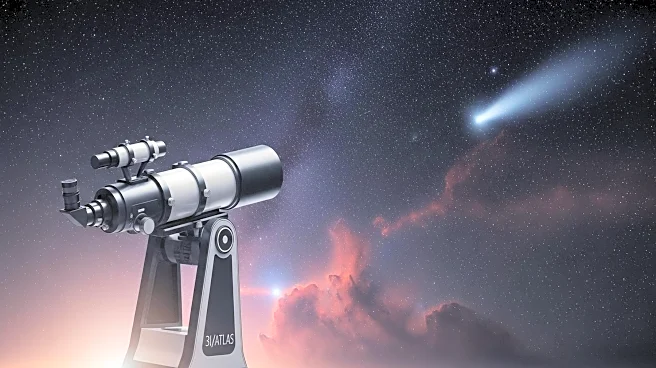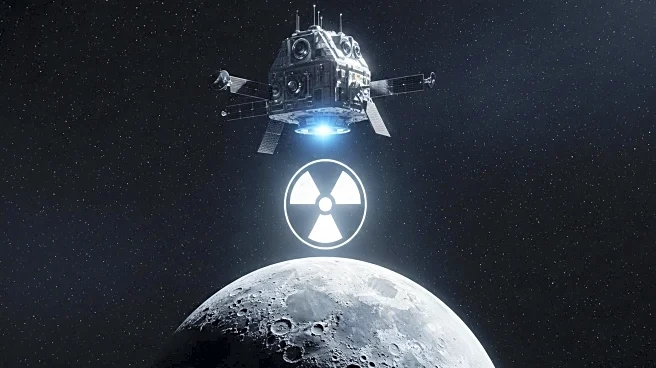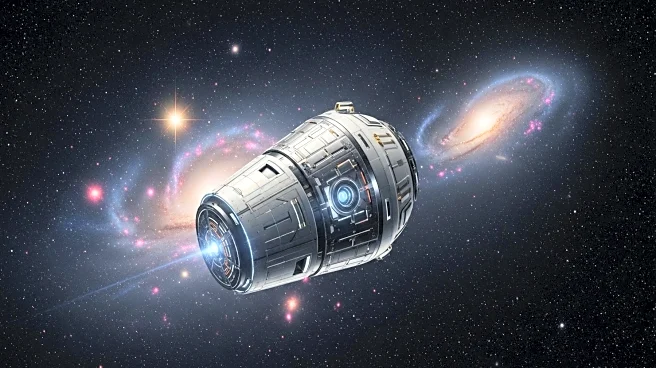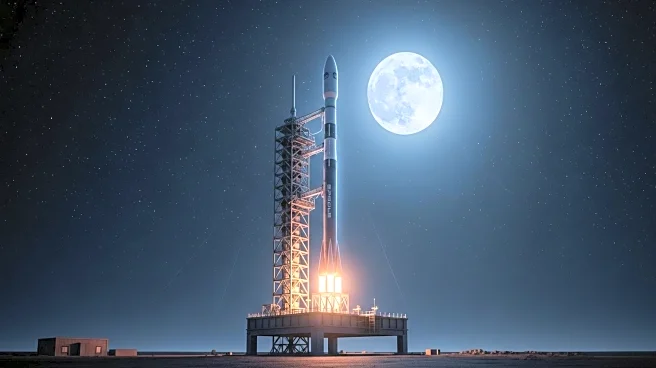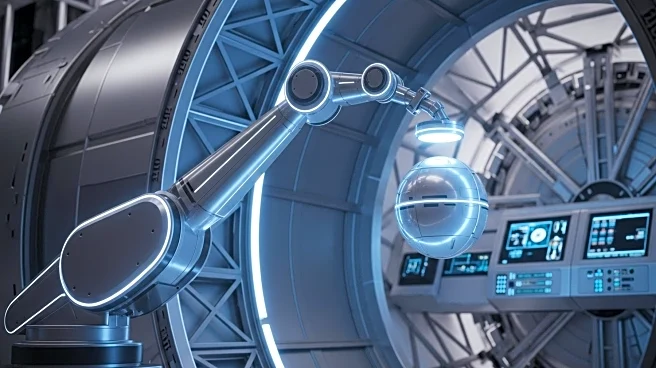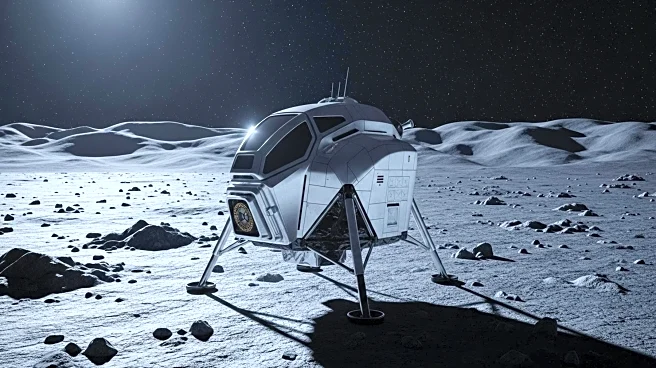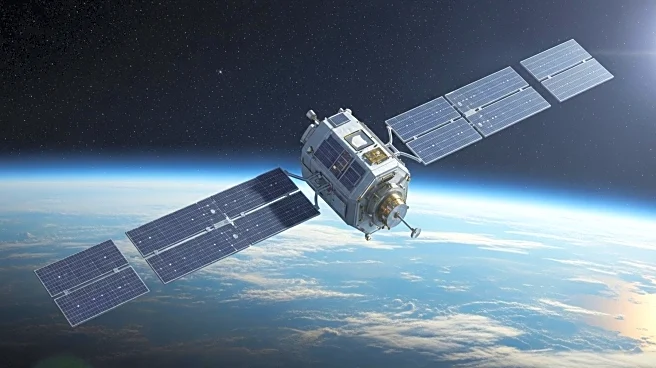What is the story about?
What's Happening?
On September 26, 2022, NASA's Double Asteroid Redirection Test (DART) mission achieved a significant milestone by successfully altering the trajectory of an asteroid. The mission involved a spacecraft, developed by NASA and Johns Hopkins University Applied Physics Laboratory, colliding with the asteroid moonlet Dimorphos, which orbits the larger asteroid Didymos. The impact occurred 11 million kilometers from Earth and was designed to test the kinetic impactor method, a strategy to deflect potentially hazardous asteroids. The mission was inspired by historical concerns about asteroid impacts, notably the discovery of the Chicxulub crater linked to the extinction of the dinosaurs. The DART spacecraft, launched in November 2021, managed to shorten Dimorphos' orbit by 32 minutes, exceeding expectations and demonstrating the potential of this method for planetary defense.
Why It's Important?
The success of the DART mission marks a pivotal advancement in planetary defense strategies, providing a viable method to protect Earth from potential asteroid impacts. This mission underscores the importance of developing technologies capable of altering the paths of space objects that could pose a threat to life on Earth. The ability to deflect asteroids could prevent catastrophic events similar to the one that led to the extinction of the dinosaurs. The mission's success also highlights the collaborative efforts of scientific institutions in addressing global threats, potentially influencing future policies and funding for space exploration and defense initiatives. However, the mission also raises questions about the unintended consequences of such interventions, as follow-up studies suggest potential risks from debris created by the impact.
What's Next?
Following the DART mission, scientists are conducting further studies to understand the full implications of asteroid deflection. Concerns have been raised about the potential for debris from the impact to pose new threats, such as rogue boulders that could eventually reach Earth or Mars. These findings suggest that while the kinetic impactor method is promising, more research is needed to refine the technology and account for all variables involved in asteroid deflection. Future missions may focus on addressing these challenges and improving the precision of impact strategies to ensure the safety and effectiveness of planetary defense measures.
Beyond the Headlines
The DART mission's success also prompts ethical and strategic considerations regarding the manipulation of celestial bodies. As humanity gains the capability to alter the paths of asteroids, questions arise about the governance and decision-making processes involved in deploying such technologies. The potential for unintended consequences, such as creating new threats from debris, highlights the need for comprehensive international cooperation and regulation in planetary defense efforts. Additionally, the mission serves as a reminder of the broader implications of space exploration and the responsibility that comes with the ability to influence the cosmos.
AI Generated Content
Do you find this article useful?
